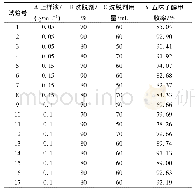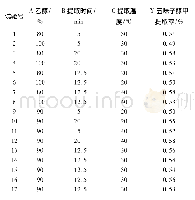《Table 1Literature review of SLM/SLS techniques for microscale fabrication.》
Equipment-related scaling factors include the building platform,optical system,powder recoating,powder handling,and powder recycling.The size of the building platform and hence the entire equipment footprint is smaller for micro SLM systems.In order to satisfy one of the major requirements of achieving a fine spot size,the optical units must be modified,which will be described in Section 4.2.Another important requirement for micro SLM is achieving a smaller layer thickness,which can be realized by precision drives for the powder dispensing and building platform.The major equipment-related issues with the scaling down have been the need to use fine powders of the sub-micrometer scale or even nanoscale.Since the exposure of fine nanopowders to the environment carries safety and health hazards,it is advisable to minimize the manual handling of such powders.It is of the utmost necessity to provide a tight enclosure to the building chamber,as for any SLM machines.The effect of the powder particle size and the recoating system will be discussed in Sections 4.3and 4.4,respectively.Post-treatment differences include the surface finishing and heat treatment performed on the AM parts.Heat treatment of microparts with thin features could result in part distortion.Powder adhesion to the walls has been a common occurrence in SLM,which necessitates further finishing after printing.In microscales,there is a possibility that the machining of thin walls will not be possible.A non-contact finishing such as electropolishing might be ineffective as well,as observed by Noelke et al.[38].Thus,it is necessary to fabricate parts with a good surface finish both on the surface and along the walls,rather than relying on secondary subtractive processing.The surfacefinishing effect is discussed in detail in Section 5.
| 图表编号 | XD001944600 严禁用于非法目的 |
|---|---|
| 绘制时间 | 2019.08.01 |
| 作者 | Balasubramanian Nagarajan、Zhiheng Hu、Xu Song、Wei Zhai、Jun Wei |
| 绘制单位 | Singapore Institute of Manufacturing Technology (SIMTech), Agency for Science, Technology and Research (A*STAR)、Singapore Institute of Manufacturing Technology (SIMTech), Agency for Science, Technology and Research (A*STAR)、Singapore Institute of Manufact |
| 更多格式 | 高清、无水印(增值服务) |
 提示:宽带有限、当前游客访问压缩模式
提示:宽带有限、当前游客访问压缩模式





